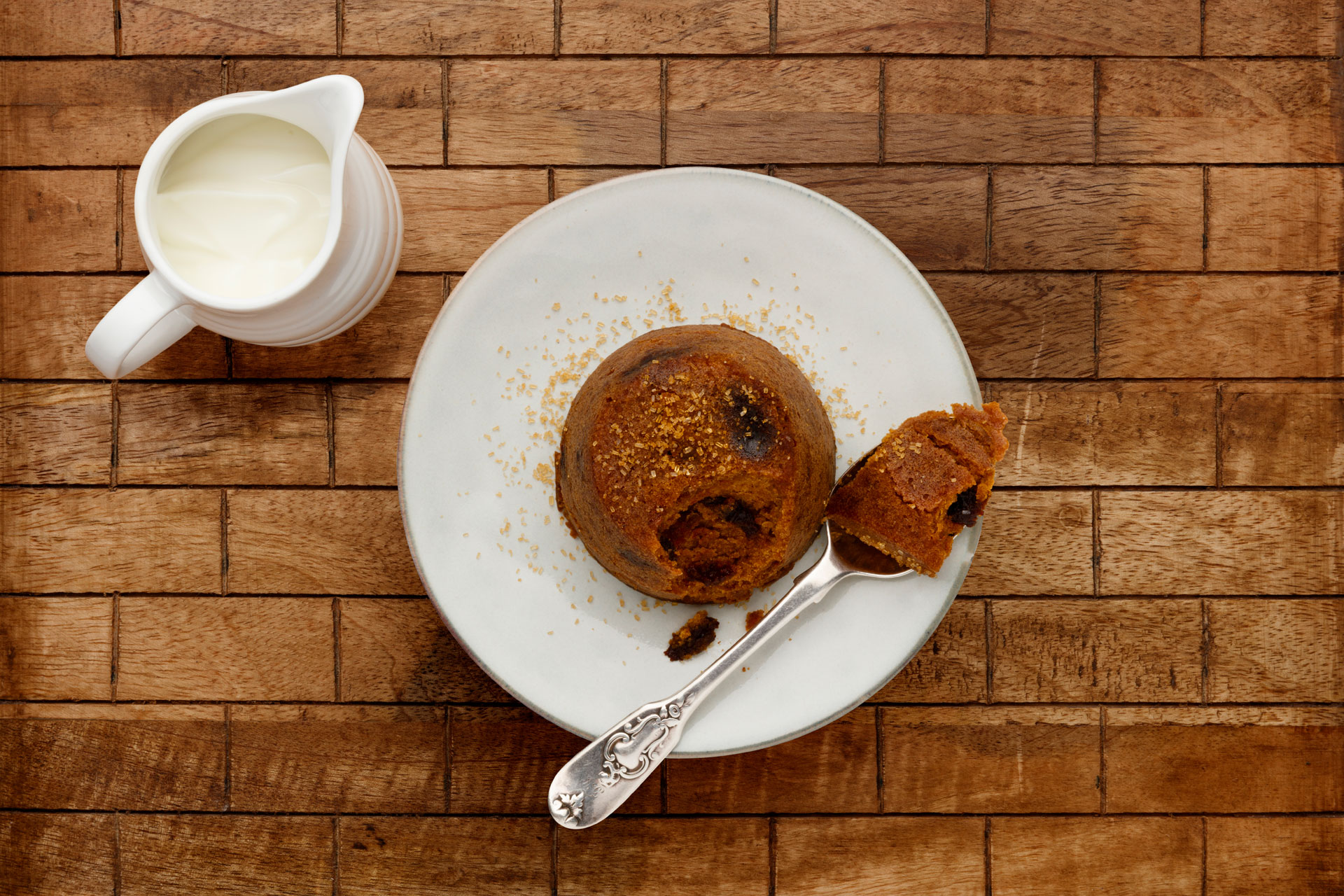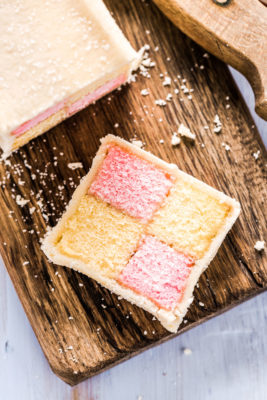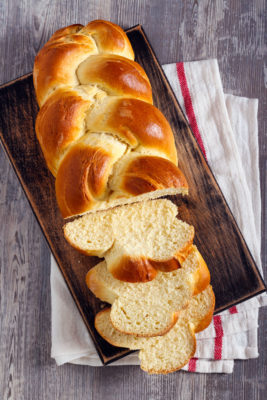Bake Off Recipe: Prue Leith’s Spotted Dick And Custard
By
12 months ago
Try your hand at this week's technical challenge

The name might prompt a giggle or two, but spotted dick is one of the ultimate British comfort desserts. A spongy, steamed pudding, it’s traditionally made with suet and dried fruit, with the first mention of the recipe dating all the way back to 1849, when it appeared in a cookbook from French chef Alexis Soyer.
Contestants were tasked with making Prue Leith’s version on this week’s episode of Great British Bake Off. The recipe was made trickier with the addition of an accompanying creme anglaise – with Prue ominously warning bakers that ‘there is a common pitfall to this technique,’ adding: ‘don’t fall into the trap.’

Paul and Prue (Channel 4)
Later she said to Paul Hollywood: ‘My main memory of steamed puddings comes from school dinners. We thought spotted dick was hilarious, of course. And done well, it’s delicious.’ Try it yourself with the recipe below.
Great British Bake Off Technical Challenge No. 6: Spotted Dick And Custard
‘The original old-school nursery pudding, there is no lumpy custard here! For all the inevitable amusement it causes, the word “dick” is said to come from an old dialect pronunciation of “dough”. And the spots, of course, are the scattering of currants throughout. We’re using vegetable suet here, to make this pudding veggie-friendly, and Prue’s custard is made using double cream as well as milk, for spoonfuls of extra luxury.’
Ingredients:
For the spotted dick
- 125g currants
- Finely grated zest and juice of 1 orange
- Finely grated zest and juice of 1 unwaxed lemon
- ½ tsp bicarbonate of soda
- 300g plain flour
- 2 tsp ground cinnamon
- 2 tsp baking powder
- 150g shredded vegetable suet
- 75g light brown soft sugar
- 200ml whole milk
- Just-boiled water, for steaming
For the syrup
- 200g caster sugar
- 100ml just-boiled water
- 1 lemon wedge
- For the custard
- 250ml whole milk
- 250ml double cream
- ½ vanilla pod, split and seeds scraped
- 6 large egg yolks
- 50g caster sugar
Equipment
- 1-litre pudding basin, greased
- Kitchen string
Method:
- Make the spotted dick. Tip the currants into a medium heatproof bowl. Add the orange juice and lemon juice and stir together. Cover the bowl with a saucer and place the bowl in a microwave on its highest power for 3 minutes. Remove the bowl from the microwave, remove the saucer, then stir in the bicarbonate of soda and leave the currants to stand for 15 minutes, until plumped up. Alternatively, if you don’t have a microwave, tip the currants, orange and lemon juice into a small saucepan over a medium heat and bring the liquid to the boil. Remove from the heat, stir in the bicarbonate of soda and leave the fruit to soak for up to 3 hours, until plump. Drain the currants through a sieve.
- Place the flour, cinnamon, baking powder, vegetable suet, brown sugar, orange zest, lemon zest and drained currants into a mixing bowl and mix with a balloon whisk to combine. Add the milk and stir with a wooden spoon to make a soft dough.
Spoon the mixture into the buttered basin. Lay a sheet of foil over a sheet of non-stick baking paper (these need to be large enough to cover the top of the pudding bowl). Pick up both and fold a vertical pleat down the centre. Place the foil and paper over the top of the bowl, positioning the pleat down the centre. - Tie a piece of string around the edge of the bowl to secure the foil and paper, then tie the string over the top of the bowl and secure it on the other side to make a handle.
- Place a side plate upside down in the bottom of a large, lidded saucepan and place the pudding basin on top of the plate. Fill the pan two-thirds of the way up with just-boiled water.
- Cover the pan with the lid, place it on a medium-high heat and bring the water back to the boil. Then, reduce the heat and simmer for 1½ hours, until the foil top has risen a bit and the pleat is stretched slightly.
- Make the syrup. While the pudding is steaming, tip 50g of the caster sugar into a small saucepan and add 3 tablespoons of cold water. Place the pan over a low heat and stir until the sugar dissolves, then increase the heat to medium and cook to a golden caramel.
- Remove the pan from the heat and very carefully pour in the just-boiled water (stand back as the caramel will spit a bit). Return the pan to a low heat, add the lemon wedge and remaining 150g of caster sugar, and stir until the mixture comes to the boil. Reduce the heat to its lowest setting and simmer very gently for 20 minutes, until the mixture becomes a light golden colour and has a syrup consistency. Remove the pan from the heat again and set aside until ready to use.
- Make the custard. Place the milk, cream and vanilla seeds into a pan and bring the liquid to a simmer.
- Place the egg yolks and sugar into a bowl and whisk together until combined. A little at a time, pour the warm milk mixture onto the eggs, stirring continuously with a balloon whisk. Pour the mixture back into the pan and cook over a low heat, stirring with a wooden spatula, until the custard is just thickened.
- Once the steaming time is up, use the string handle to carefully remove the pudding basin from the pan. Leave it to cool for 3 minutes, then remove the string, foil and baking paper.
- Place a serving plate over the top of the basin, then carefully turn out the pudding onto the plate. Re-warm the syrup and pour it over, and serve with the custard.
Recipe from thegreatbritishbakeoff.co.uk





















